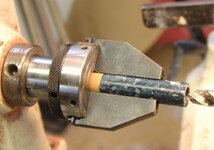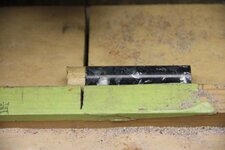brownsfn2
Member
I have noticed as I progress through my learning that my drill press is not as accurate as I would like it to be. It has not been crtical up until now.
I got all excited about finding some unique materials on Exotics to turn (cebloplast and ebonite) that I did not consider the diameter. They are 16mm which looks like there is not much room for error in drilling (making triton).
I do not have a collet chuck but I have put by DP chuck in my lathe to drill a larger spindle on a glue block before.
Is there a way for me to do this without a collet chuck? I only have a bowl chuck.
I got all excited about finding some unique materials on Exotics to turn (cebloplast and ebonite) that I did not consider the diameter. They are 16mm which looks like there is not much room for error in drilling (making triton).
I do not have a collet chuck but I have put by DP chuck in my lathe to drill a larger spindle on a glue block before.
Is there a way for me to do this without a collet chuck? I only have a bowl chuck.


